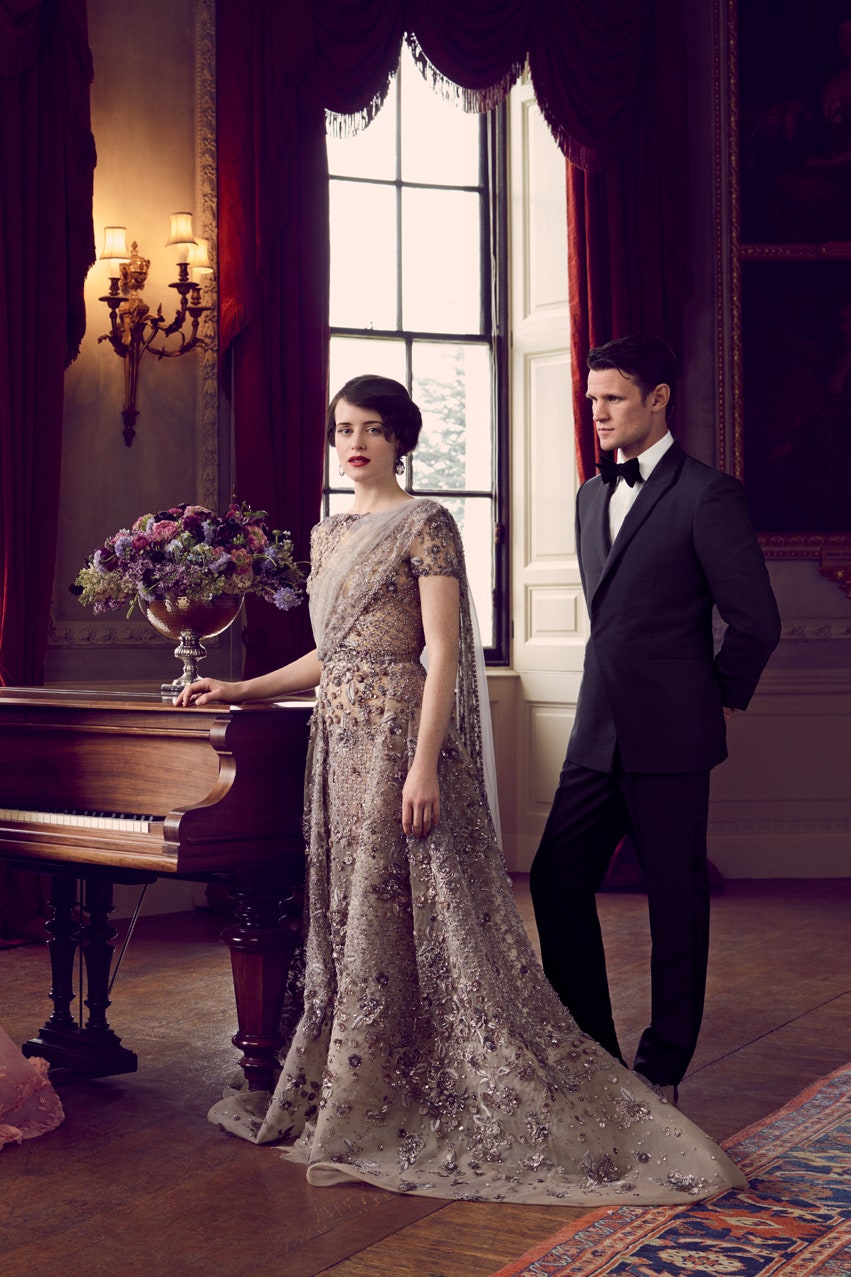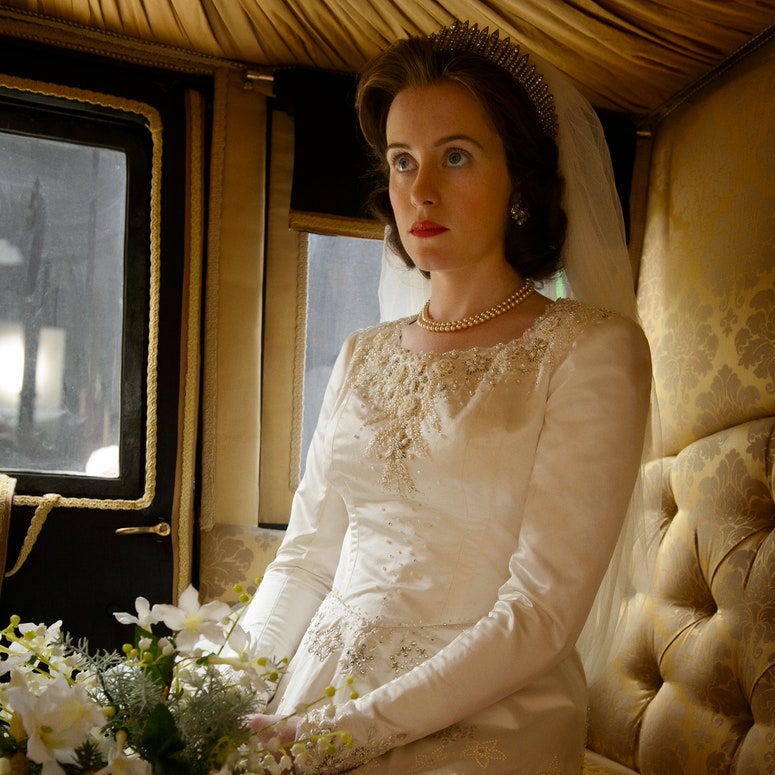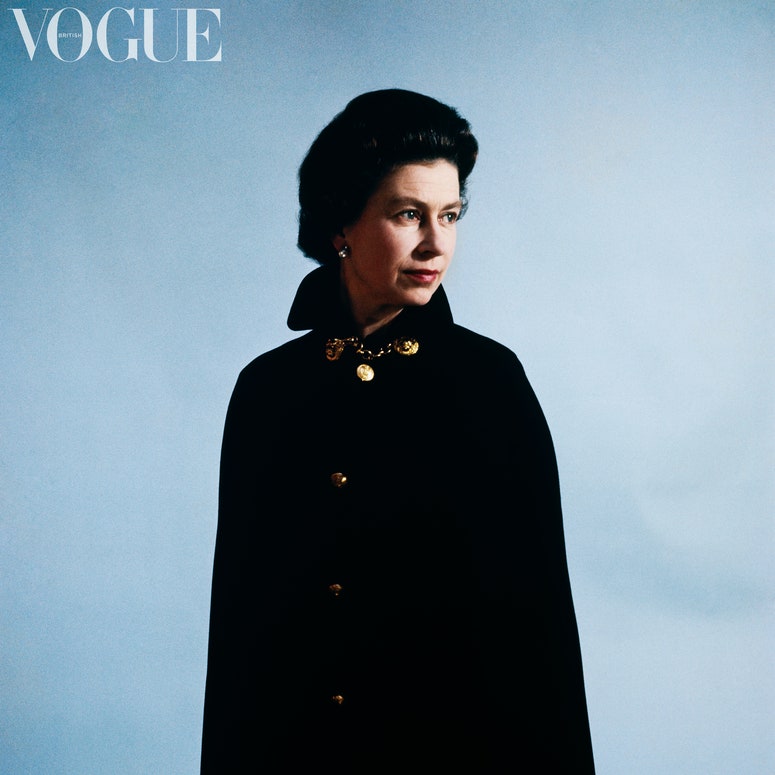In 1994, the Royal Court Theatre in Sloane Square staged a play based on Sue Townsend’s novel The Queen and I, in which the Queen had been deposed and was living with her family in a council flat. In the middle of one matinée performance there was a bomb scare, and audience and cast (still in full costume) were evacuated into the square. Passengers on top of circling double-decker buses were riveted but disconcerted to see the Queen, Prince Phillip, Prince Charles and Diana, Princess of Wales standing about, drawing heavily on cigarettes, apparently at a loss as to what to do on a sunny Wednesday afternoon. Indeed, from the point that Victorian writer Walter Bagehot identified the mystique of the royal family as the key element of their enduring appeal, the old belief persisted that if daylight shone on to the elusive regal magic, the ethereal spell would be broken. Since Bagehot, however, the brightest arc lamps – or rather tell-all books, prime-time interviews and excruciating taped phone conversations – have succeeded in illuminating some of the monarchy’s most guarded secrets. And yet, we remain infatuated. What does the Queen carry in her Launer handbag? Where can we buy the Duchess of Cambridge’s Breton tops? Interest in the royal family is as British as an addiction to soaps and complaining about the weather.
And The Crown, a new, meticulously researched 10-part show (with further series in the planning) commissioned by Netflix, will only fuel the fire of our infatuation. Spanning the years from Princess Elizabeth’s wedding in 1947 to the Suez Crisis in 1956, writer Peter Morgan (The Audience and The Queen) and director Stephen Daldry (The Audience) offer us an unprecedented invitation to spy on royalty and watch, rapt by the very ordinariness of this extraordinary family. And for Morgan, that is the Windsors’ enduring appeal; at some level, we all face the equivalent of the Queen’s Tupperware-versus-orb-and-sceptre polarity. “The life we ideally want to lead and the compromises we have to make allows us all to connect with the predicament faced by Elizabeth Windsor and Elizabeth Regina,” he says.
The Crown examines this tension: as the film opens, George VI is observing the most private of personal morning rituals. But his brushing, scraping and shaving is soon interrupted by a coughing fit and, bent double, he hurls himself over the loo as the camera pans into a pool of blood. The king, a representative and a symbol, is shown with graphic clarity to be mortal. Indeed, the series keeps an unwavering eye on the royal family’s physical vulnerability. From a gruesome operation to remove the king’s lung to the distress of a daughter witnessing the embalming of her father’s body, Morgan gets up close and very personal with a family we have long gazed at on their pedestal.
But The Crown has all the glittering settings, too. Mostly shot on location inside the ancestral seats of England’s grandest families – Hatfield House, Lancaster House, Loseley Park, Wrotham Park, Langleybury, Wilton House, Englefield – their silk wallpapers and coroneted cornices provide opulent credibility. The many scenes played out in the royal family’s private quarters in Buckingham Palace, built on sets in Elstree Film Studios, are not just enthralling for the way they look, but for the logistical problems of being royal that they highlight – it is practically impossible to get hold of the Queen directly on the telephone, for example, because of a complicated switchboard system. Prince Philip is left fuming when he is denied permission for a direct line. The production designer, Martin Childs, and the art director, Mark Raggett, who previously worked together on Shakespeare in Love, went on research trips to Buckingham Palace and forensically analysed pictures and film footage for accuracy. The result resounds with authenticity.
For all the privilege, for all the sumptuous gowns and elegant suits (at which The Crown excels, thanks to the skill of Michele Clapton, who also designs the costumes for Game of Thrones), the story of a princess becoming a queen is in some ways personally devastating. Rarely has the transition from (relatively) carefree young married woman to the wearer of a gravity-challenging crown seemed so unenviable, so life-sentencing. Claire Foy portrays Princess Elizabeth’s charm and tenacity as lace lined with marble. Demonstrably in love with her husband and devoted to their two young children, her prelapsarian freedom seems all the more precious for its sudden curtailment. As Queen Mary greets her newly acceded granddaughter, curtseying deeply to her for the first time, the audible creak of ageing knees makes you wince.
In fact, before Eileen Atkins – who here plays Queen Mary – went to a reception at Buckingham Palace, she had a “take-it-or-leave-it approach to the monarchy”, she confesses. And then she met the actual Queen. “Something hit me as I walked through that door,” she says, explaining how she experienced first hand what the series conveys so powerfully. “I was suddenly aware that being royal is no privilege. They are constantly on, they cannot ever slip off their shoes in public. Celebrities choose fame. Royals have it thrust on them.”
So much of what we feel for the royal family is bound up with our admiration for the Queen and the way in which she has devoted her life to a role that she neither asked for, nor knew would be hers, until her uncle’s dramatic abdication when she was just 10 years old. On her 21st birthday she made a moving speech committing herself to her country, the Commonwealth and her subjects, “whether my life be short or long”.
Five years later, in 1952, she acceded to the throne, her youth, beauty and innocence appealing to a vulnerable population still subject to rationing, the grief and hardship of the Second World War receding but not yet a decade behind them. Now this country’s longest-serving monarch with 64 years on the throne, as the integrity of politicians, bankers, churchmen and the media have at times crumbled around her, the Queen has remained true to that duty she promised all those years ago.
Constancy has defined her, even when her children’s marriages collapsed, her favourite home was on fire, her mother and sister died within six weeks of each other, and even now, when she is 90 years old. Paying tribute on her 90th birthday, David Cameron said, “Her Majesty has been steadfast, a rock of strength for our nation, for our Commonwealth and, on so many occasions, for the whole world.” Most telling, perhaps, are the opinion polls that have delivered a steady approval score for the monarch of not less than 70 per cent throughout her reign. And a 2015 YouGov poll revealed that more than six in 10 people believe Britain will still have a monarch in 100 years’ time.
The future of the royal family has not always looked so sunny. When the wireless was the dominant medium, apart from the sound of George VI’s humiliating stammer, the public image of royalty was relatively controllable. But the zoom lens kick-started the erosion of the mystique. In 1936, the hand of Wallis Simpson, a twice-married woman, was photographed resting on the forearm of the king. In 1952, Princess Margaret was caught on camera picking fluff off the coat of her father’s equerry, a divorcee and therefore romantically off-limits for a princess. A generation later, pictures of a bikini-clad Princess of Wales sunbathing while pregnant were splashed across the papers. More recently, images of Prince Harry “cavorting” in a Las Vegas swimming pool did a roaring trade for the press. The royal family has sometimes suffered from a shaky relationship with the media.
And yet, as the late Princess of Wales realised, if the popularity of the royal family was to survive, it was important to step out from behind their crenellated walls and become more available to us, more human. The Queen only fully realised the importance of this insight immediately after Diana, Princess of Wales’s death. Never was her hesitancy as damaging as when she remained with her family far away up in Balmoral rather than returning to join the thousands of her grieving subjects in the capital. If ever there was a moment when her position on the throne was unsteady, this was it. But it is to her credit that, at the 11th hour, she returned to London and rescued the situation with an emotional and deeply personal televised address to the nation.
The dual demands for privacy and exposure present a precarious tightrope on which the royal family must walk. Public enjoyment versus public expectation can pull in conflicting directions. Royal scandals sell papers, they spark national debate, and they provide a subject on which everyone has a view. But we also look to the monarchy to represent us as a nation, to reflect who we are and what we stand for on the international stage, to fly the flag for our Britishness – however nebulous a concept that is. We beam with pride at Prince Harry’s enterprise and his own excitement at the success of his Invictus Games; we celebrate the chicness of the Duchess of Cambridge, a real-life Cinderella who started life as “one of us” and was transformed into a princess before our eyes; and we marvel at the work ethic of the Queen.
However, too much reality, while tempting, is also unsettling. As the distinguished constitutional historian Vernon Bogdanor explains, “We project ideal values on to the royal family that we would like to have ourselves. We need someone to look up to in a secular age.” We feel amused as well as strangely guilty knowing that the Queen and Prince Philip, when alone in Buckingham Palace and without royal engagements, like nothing better than to tuck into their Eggs Drumkilbo from lap trays as they watch the cricket on television. And take Snowdon’s delightful photograph of a smiling Princess Margaret lying in the bath, wearing nothing but an enormous tiara. She is so nearly us, doing something we all do, with merely the sparkle of a diamond between us.
On his way to sign the abdication papers in 1936, Edward VIII’s car passed Windsor Castle. “How solid, secure and changeless it was,” he remembered years later, “something left over from the Middle Ages.” He wrote this wistfully, maybe, but also with relief at being released from a predicament that had come to resemble a trap. The role he rejected was one of influence but also impotence, an ability to push at the boundaries while knowing the boundaries would always remain in place. The monarchical cage, however gilded, survived him to house another incumbent and her family, into which the public continues to stare in fascination, to marvel at, often to admire but rarely to envy.



